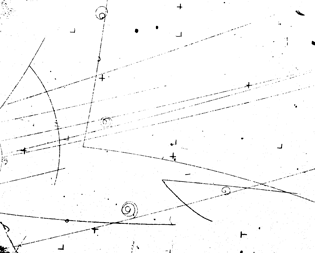Conceptual Background
While Longplayer is most often described as a 1000 year long musical composition, the preoccupations that led to its conception were not of a musical nature; they concerned time, as it is experienced and as it is understood from the perspectives of philosophy, physics and cosmology. At extremes of scale, time has always appeared to me as baffling, both in the transience of its passing on quantum mechanical levels and in the unfathomable expanses of geological and cosmological time, in which a human lifetime is reduced to no more than a blip.

In the mid 1990s, as the year 2000 approached, I started to wonder about how to make sense of a millennium – that is, how to render as sensible or tangible the great span of one thousand years, not so long in cosmic terms but sufficiently longer than a human lifetime – and how to possibly focus the mind on time as a longer and slower process than the frenetic jump-cut pace of the late 20th Century.

It occurred to me that to make a piece of music exactly 1000 years long not only solved the problem of how to “make” time, but added another dimension to the idea by opening up questions about music and sound, composition and duration. The simple idea that popped into my mind, “write a 1000 year long piece of music,” demanded solutions to an ever expanding range of questions; how to deal with changing cultural perceptions of music, how to listen to music too long to hear completely, where to place it, what technology to base it on, how to make it available to the public… and perhaps most importantly, how to plan for its survival.
The Art of Keeping Time:

Once upon a time – let's call it 1995 – Jem Finer approached Artangel with the seed of what, over the next five years, would become the fledgling branches of Longplayer.
At the outset, two things were immediately apparent: that this was not just a simple project about music, and that here was an idea – vast yet simple – that would lead us into new and uncharted territories. In differing degrees, each Artangel project is an unexpected journey across unknown terrain, and the real lack of any map or compass for this project was especially enthralling.
Even then, Longplayer's potential as a paradigm for the different applications of long-term thought and vision – way beyond the music – was obvious. And since the music began, Longplayer has exercised minds in fields as diverse as architecture, engineering, landscape gardening, artificial life, quantum mechanics, communications technology, and comparative religion.
Though Longplayer was never just about music, it was equally clear from the outset that the music had to be truly wonderful. The use of Tibetan bowls as the sound source for Longplayer – a bronze age solution to a new millennial challenge, somehow dignified (rather than commodified) the millennium.
The resulting music – fluid, timeless, yet precisely time coded – has a contemplative and clarifying stillness. Standing alone in the lighthouse at Trinity Buoy Wharf, away from the din of the city, Longplayer becomes an environmental soundtrack to the cloud formations above the river Thames – music suspended in an endless present, yet in that instant echoing a past and a suggestion for the future. Perhaps another generation of listeners will find ways of describing the music's own taxonomy – its cumulus, stratus and cirrus: the heaps and curls of Longplayer's pre-determined, yet unfathomable, weather system.
In making time tangible, the continuum of Longplayer helps to reduce the vertiginous fear of infinity and somehow sweetens the fearful thought of our own mortality, enabling us to live with hope. As Janna Levin says, “it is longer than one human lifetime but relies on an optimism that it will not be beyond the lifetime of our species… underlying the hope to maintain Longplayer is the hope to maintain the species.” In this way, the music can be seen as a beacon or rallying call for long-term survival strategies, at a time of quick fix and in a culture of short change.


